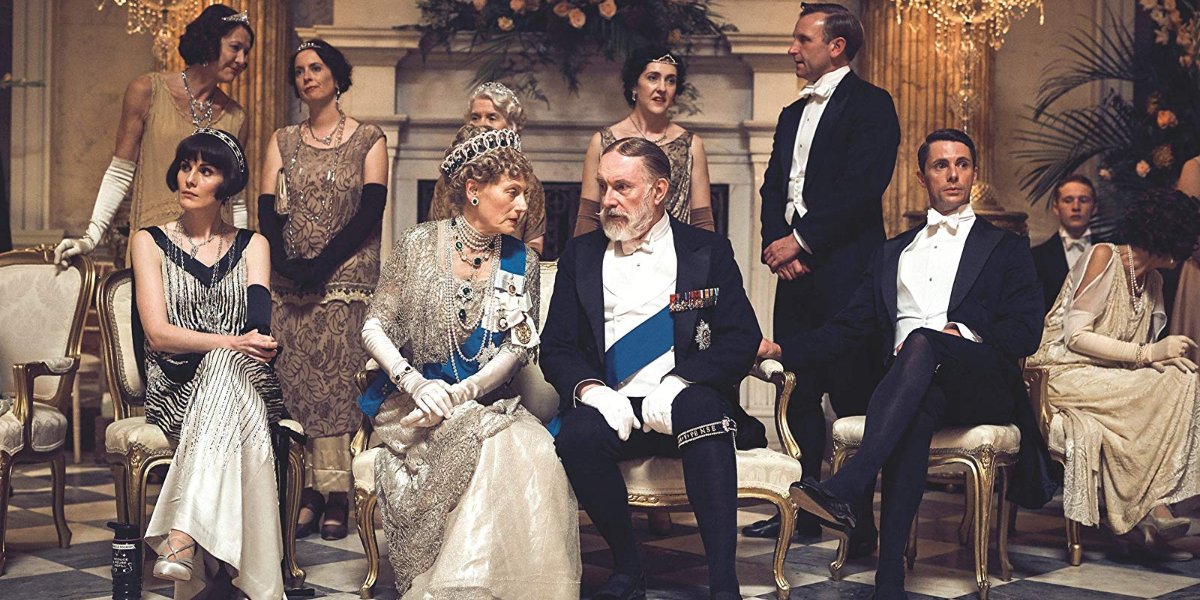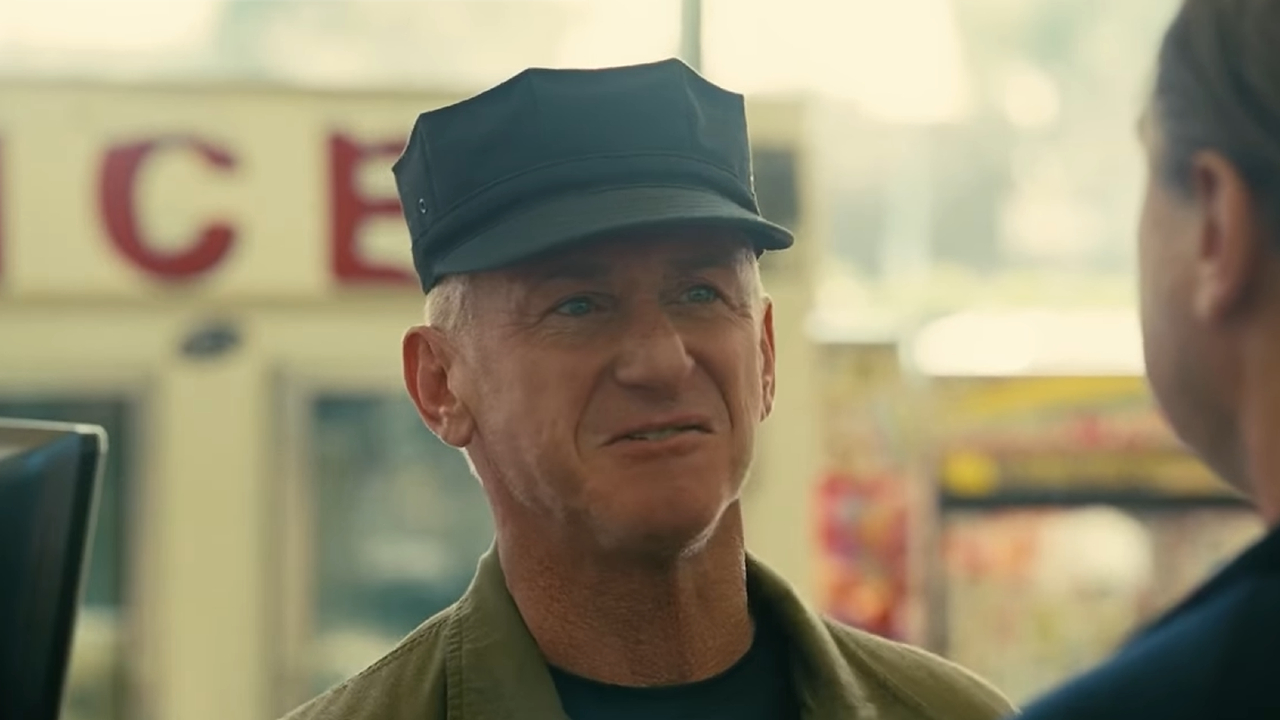How Downton Abbey Jumped From TV To Film, According To The Director

When a TV show gets to a certain point of popularity, the question of when the seemingly eventual film adaptation will arrive starts to become more of an issue that needs to be addressed. By time creator/writer Julian Fellowes had concluded Downton Abbey's run in 2015, that was a question that even he really didn’t have an answer to.
Over the next couple of years, an idea would take hold, leading Fellowes to get the Crawley family gang back together in order to make Downton Abbey into a cinematic event for 2019. But it wasn’t just as simple as deciding to make a movie and turning on the cameras. For the world of British period drama to cross over from the world of TV to that of the cinema, some crucial adjustments would need to be made.
At the head of the actual production process was the film’s director, and fellow Downton veteran, Michael Engler. The director of several episodes from the series’ later seasons, Engler was a perfect choice to update the world of this hit television series for the big screen.
Which meant that when I got to sit down with him on behalf of CinemaBlend during the recent press day for Downton Abbey, we had an in-depth conversation about the intensive process of returning audiences to a place and time they were previously used to seeing on a smaller scale.

How Julian Fellowes’ Story Created A New Lens For Downton Abbey
As one would suspect, it all began with Julian Fellowes’ able pen, as Michael Engler explains below:
First of all, it starts with the script, and what [Julian Fellowes] had to do, which was create a structure that would be a standalone story. A one story event that would pull all the funny characters in and raise the stakes for them all, and have its own kind of beginning-middle-end, and then give you opportunities to go off on little off-shoot stories with all these characters you’ve come to know. The series worked that way, everybody had their own little story, and he had to find a way to do that and still make it feel like one event. So just balancing those stories out and keeping the main one moving forward was the trickiest part of that.
With Fellowes himself admitting that he didn’t know for a fact that there was even going to be a Downton Abbey movie, the script process sounded like it encountered a little more difficulty than the usual film adaptation of a televised series. As the Crawley family’s story felt pretty wrapped up at the end of Season 6, there was the need for something extraordinary to open the book back up on his famed series.
And what better an occasion than a royal visit from King George V and Queen Mary, played in the film by Simon Jones and Geraldine James, respectively. With inspiration from a real life royal visit in 1912, Hugh Bonneville and Elizabeth McGovern’s Lord and Lady Grantham were now given a proper reason to return with family, friends and everyone else in tow.
Your Daily Blend of Entertainment News
With a new story came new scenarios for everyone, from the heads of the Crawley household to their children and their families, and even the downstairs staff! This in turn fed naturally into scaling up the visual scope of Downton Abbey’s cinematic debut, which Michael Engler continued to discuss in the following terms:
But then, because the mechanism of creating that story was the Royal Visit, it also created a lot more interesting and different kinds of cinematic opportunities. Just big scale events, you know the parade and the review of the troops, and the ballroom scene, the big parties, and things like that, so that pretty naturally, things scaled up to size. Whereas in the series, if you had a scene at a big ball, you might have caught corners of it, and pieces of it, you might not have seen the whole huge thing so many times, or at all. You’d sort of see it from an anteroom nearby or something like that. Even just scaling up the rooms we’re familiar with, and the costumes, and all that, it allows for so much more detail to be perceived, and for us to be able to develop that focus on it.
From Julian Fellowes’ script to Michael Engler’s execution of said script’s vision, Downton Abbey experienced a natural progression when it came to opening up the story into a brand new context. And with a new story in a new medium comes the opportunity to mix some of that creative energy into the look of the world so familiar to us all.

Updating The Look And Feel Of Downton Abbey
With a couple of years passing between the end of Downton Abbey’s series and production on the film version, there was no guarantee that the sets from the ITV series still existed. But as luck would have it, the production of the film continuation wasn’t plagued by too many cases of rebuilding familiar settings from the Grantham estate.
Engler’s story about scaling Downton for the big screen continues by describing how even though some well-known corners of the palatial manor were still available for production, there was always a way for things to become a bit more visually updated:
They rebuilt some of them, and some of them they had. For instance the bedrooms, they were the same bedrooms, it was the same furniture and all of that. But then, where the walls had been painted green, instead now it was like beautiful cut green velvet wall coverings. So you were back in those rooms again, and they felt the same, but now suddenly you thought ‘Wait, why does this feel so much richer, and more detailed and complex?’, and it was really all those details could get a little bit more fleshed out. You would see more detail, you’d see more depth.
Obviously with the budget of a major motion picture like Downton Abbey, a lot of older sets could be updated. It wasn’t just a matter of updating what was being filmed, as the method of how filming Downton had evolved as well. Even just watching the trailer to the movie, you can see that both the upstairs and downstairs at Downton, as well as the village it resides near, looks and feels much warmer than ever.
The secret weapon in this case came down to one particular member of the Downton Abbey film crew that Michael Engler had to single out for praise:
Ben Smithard is a really great cinematographer. Not that there weren’t any in the series, but he just has a good eye for that kind of scale of romance and period and everything.
A series that was once known for drawing room conversations, intimate dances and lots of natural light was turned into a film that turned what already looked beautiful on television into an absolutely stunning film. Which leads to the final finishing touches that Engler and I discussed during our time together, as the expansion of scope didn’t stop with the look and structure of the story – it also came with some added elements that enhanced what made Downton Abbey so special.

A Funnier, More Action-ish Downton
While Downton Abbey has always had a way with humor, Julian Fellowes has outdone himself with the new film, as there are several sequences that see the laughs coming faster and funnier than ever. As someone familiar with the material, Michael Engler was ecstatic to see this improvement; though he explained the reservations that accompanied this increase in comedic energy:
I love that. I felt like, again, [Julian Fellowes] was just kind of amping up everything, including the comedy. So we just really embraced it. At first we were a little afraid to go too far with it, or that it wouldn’t feel like Downton, and we just said ‘No, this is the show growing into a film, and this is the film taking on its own life.’ And the scale of the event felt like it was worthy of it. It’s bigger comically, it’s bigger romantically, it’s big in every way.
A greater sense of humor is definitely something Downton Abbey benefits from at the movies. However, in a series where everything from blackmail to World War I, and some soul crushing deaths in-between, have had their place in the story, there was something new for fans who wanted to see a little bit of excitement and intrigue added to the already spectacular story. It comes courtesy of a little bit of espionage infiltrating the royal visit.
Without spoiling the fun, Downton Abbey actually sees some action added as a story mechanic for its cinematic incarnation. An actual chase scene during the crowded royal parade, as well as a moment where two characters wrestle with each other on the ground, adds some suspense and tension to the proceedings, though Michael Engler was reserved in his own recounting of that very scene, calling it “action-ish.” While some might be put off by this short burst of adrenaline, the director felt that it just played into the usual variety of stories that have been told at Downton for years, saying:
Downton always did a lot of different things, and that was what’s so amazing about it. It’s like a workplace drama, and a family drama, and a romance and a romantic comedy. It was all these different things, and I’m so impressed by its ability in this film to kind of recreate the variety and the spectrum of things that the series was in one story.
Making a movie out of a television show is harder than it seems, especially if you want to do it right. Thanks Julian Fellowes and Michael Engler’s artistic energies focusing in the right places, while also asking the best questions to make sure that the evolution of Downton’s film adventures played organically, a familiar world finds new life after taking a well-earned rest.
It could lead to some sequels that continue the Crawley family saga, though as always, it’ll come down to how this new film does in theaters.
Downton Abbey will expect you to show your support at the movies this weekend, starting with early showings on Thursday night. There is no dress code, though you will have to provide your own tea. And if you aren’t familiar with the legendary tales of Downton’s past, you can either watch the handy recap video that runs through all six seasons in a quick 10 minutes, or you could stream the entire six seasons from various purveyors of fine streaming entertainment.

Mike Reyes is the Senior Movie Contributor at CinemaBlend, though that title’s more of a guideline really. Passionate about entertainment since grade school, the movies have always held a special place in his life, which explains his current occupation. Mike graduated from Drew University with a Bachelor’s Degree in Political Science, but swore off of running for public office a long time ago. Mike's expertise ranges from James Bond to everything Alita, making for a brilliantly eclectic resume. He fights for the user.
